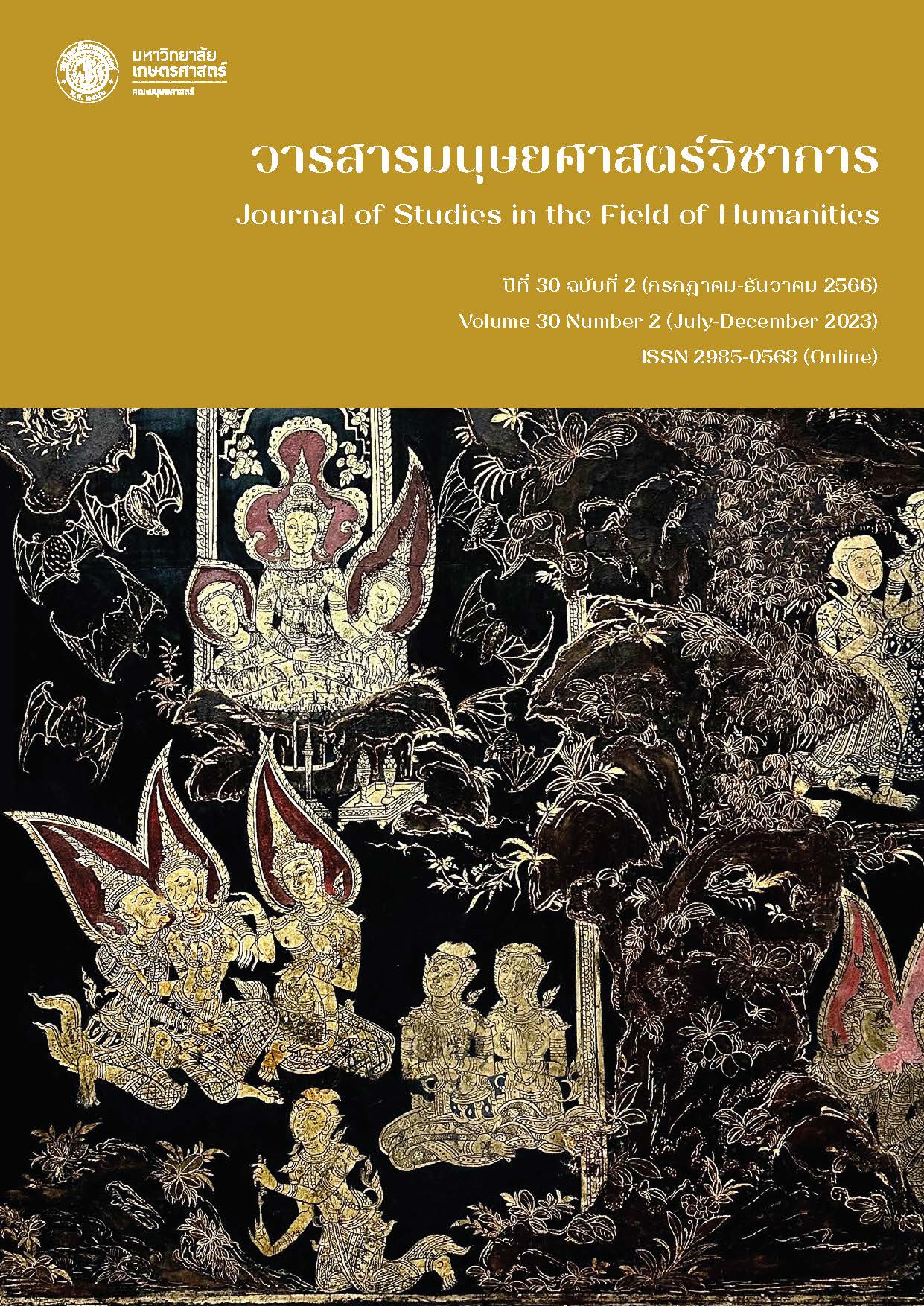Analysis of Syntactic Errors in Korean Relative Clause Produced by Beginning Thai Learners
Main Article Content
Abstract
The purpose of this research is to analyze the syntactic errors in Korean relative clauses produced by beginning Thai learners. The data from 35 Thai universities are elicited through two tasks: a sentence combination task and a Thai-Korean translation task. The overall results indicate that 1) beginning Thai learners are able to produce Object-Subject (OS) type more correctly than Subject-Object (SO) type with statistical significance. This is in line with the Perceptual Difficulty Hypothesis (PDH) which proposes that the OS type is more difficult to be produced than the SO. 2) Syntactic errors in Korean relative clauses produced by beginning Thai learners can be divided into 2 types: sentence’s word order errors and case marker’s errors. This analysis suggests beginning Thai learners lack Korean relative clause’s syntax knowledge in finding both the matrix clause and grammatical marker.
Article Details

This work is licensed under a Creative Commons Attribution-NonCommercial-NoDerivatives 4.0 International License.
References
วุฒินันท์ สีเตชะ และกิติมา อินทรัมพรรย์. (2561). กลวิธีการสร้างคุณานุประโยคของผู้เรียนชาวจีนที่เรียนภาษาไทย. วารสารบัณฑิตศึกษา มหาวิทยาลัยราชภัฏวไลยอลงกรณ์ในพระบรมราชูปถัมภ์, 12(2), 164-179.
Antinucci, F., Duranti, A., & Gebert, L. (1979). Relative clause structure, relative clause perception, and the change from SOV to SVO. Cognition, 7(2), 145-176.
Chang, Y. F. (2004). Second Language Relative Clause Acquisition: An Examination of Cross-Linguistic Influences. Retrieved February 13, 2023, from http://www.researchgate.net/publication/234586883
Cook, V. (1975). Strategies in the comprehension of relative clauses. Language and Speech, 18, 204-212.
Dulay, H., Burt, M. & Krashen, S.D. (1982). Language Two. New York: Oxford University Press.
Gass, S. (1980). An investigation of syntactic transfer in adult second language learners. In Scarcella, R.C. & Krashen, S.D. (Eds.), Research in second language acquisition. (pp. 132-141). Rowley, MA: Newbury House.
Izumi, S. (2003). Processing difficulty in comprehension and production of relative clauses by learners of English as a second language. Language Learning. 53(2), 285-323.
James, C. (1998). Errors in language learning and use: Exploring error analysis. London: Longman.
Kesmanee, C. (2013). 숙달도에 따른 태국인 학습자의 한국어 과거 관형사형 어미 사용 양상 (석사학위논문). 이회여자대학교 교육대학원, 서울.
Kuno, S. (1974). The position of relative clauses and conjunctions. Linguistic Inquiry, 5, 117-136.
Larsen, F. D. & Long, M. H. (1991). An Introduction to Second Language Acquisition Research. London: Longman.
Rattanasak, S. (2014). Acquisition of English Non-restrictive Relative Clauses: An Interlanguage Study of Thai EFL Students (Master’s thesis). Thammasat University, Bangkok.
Richards, J.C., (ed.). (1974). Error analysis: Perspectives on second language acquisition. London: Longman.
Schachter, J. (1974). An error in error analysis. Language Learning, 24, 205-214.
Suh, J. (2011). EFL Korean Learners’ Use of Relative Clauses in Both Context-free and Context-rich Situations. English Teaching. 66(2), 189-210.
Zhu, L. (2014). A study of syntactic transfer in relative clause learning of Chinese college English major. Theory and Practice in Language Studies, 4(3), 613-617.
랏타나티다 팟타나웡. (2022). 태국인 한국어 학습자의 관형사절 시제 실현에 나타난 학습자언어 변이 연구 (석사학위논문). 한국학중앙연구원 한국학대학원, 경기도.
성지연. (2010). 한국어 학습자의 내포문 사용 오류 연구-대치 오류를 중심으로-. 외국어로서의 한국어교육, 35, 51-75.
성지연. (2012). 형태 초점 교수를 통한 한국어 내포문 교육 연구 (박사학위논문). 고려대학교, 서울.
원해영. (2013). 한국어교육을 위한 기본문형 연구 - 필수논항과 격표지를 중심으로 -. 언어과학, 20(2), 145-168
이경운. (2018). 태국인 학습자의 한국어 문법 발달 특성 연구 (석사학위논문). 계명대학교 대학원, 대구.
장민지. (2012). 태국인 학습자의 L2, L3 언어 유형이 한국어 어순 배열에 미치는 영향 (석사학위논문). 연세대학교 교육대학원, 서울.
조철현. (2002). 한국어 학습자의 오류 유형 조사 연구. 문화관광부.
최은지. (2022). 한국어 학습자의 관계관형절 발달에서의 평행 기능 가설과 지각 난이성 가설의 검증. 어문논집, 96, 253-279.
혁미평•홍종선. (2016). 중국인 학습자의 한국어 관형절 내포문 사용 양상 연구. Journal of Korean Culture, 33, 115-148.


